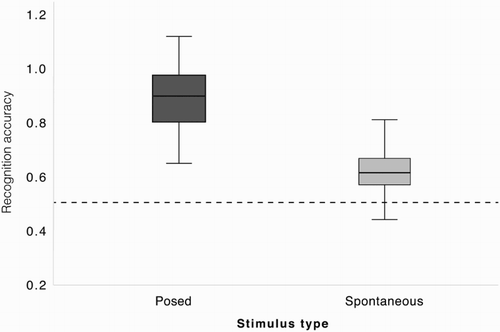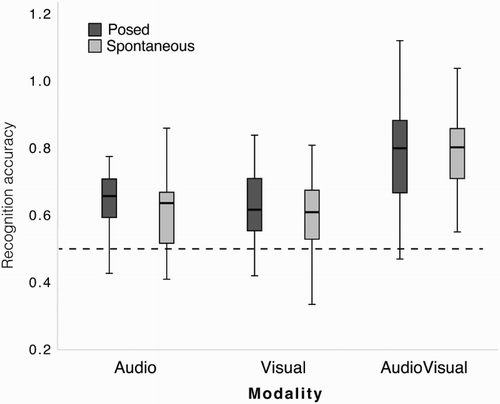Figures & data
Figure 1. Performance (arcsine Hu scores) on the emotion recognition task in Experiment 1. Data are plotted by stimulus type. Lines through the boxes are the medians, box edges are the 25th and 75th percentiles, and the whiskers extend to the most extreme data points excluding outliers. The dashed line represents chance (calculated as 1/4 correct, as there were four options of each valence).

Table 1. Table showing recognition rates (raw Hu scores) in Experiment 1 (n = 33) for spontaneous (left) and posed (right) expressions (standard deviations in brackets). Means as arcsine transformed Hu scores (used in the statistical analyses) can be found in Supplementary Table 2.
Table 2. Correct judgments (%) of whether expressions were spontaneous or posed for Experiment 1 (above) and Experiment 2 (below) for each modality separately.
Figure 2. Emotion recognition in Experiment 2 (arcsine Hu scores) for posed (dark boxes) and spontaneous (light boxes) emotional expressions. Lines through the boxes are the medians, box edges are the 25th and 75th percentiles, and the whiskers extend to the most extreme data points excluding outliers. The dashed line represents chance (calculated as 1/4 correct, as there were four options of each valence).

